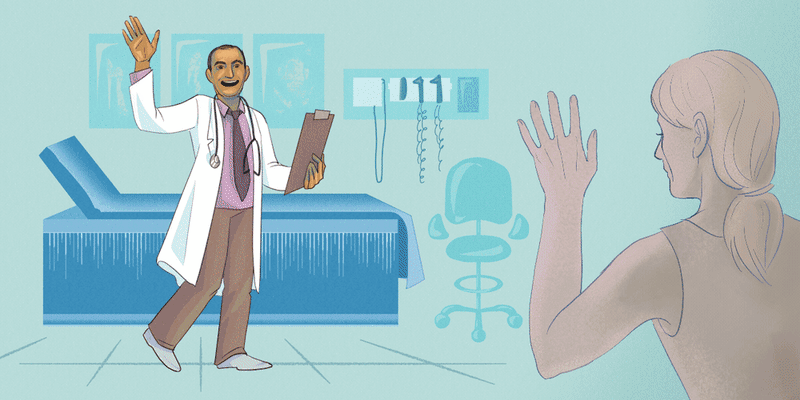For many physicians, work-life balance (WLB) is the elephant in the room. According to CHG Healthcare, in 2018, 63% of physicians finishing residency programs cited WLB as their number one consideration when choosing a job. In 2022, it was 85%. Dissatisfaction with WLB is strongly correlated with burnout, and is a common reason that many physicians choose to leave their current practice. Although women physicians tend to rate WLB as somewhat more important than men, among millennials it is a top priority for both genders. Yet physicians often avoid raising this crucial issue with potential employers and even colleagues for fear of being judged.
This fear of judgment is based in reality: providing the best and most timely care to patients often requires self-sacrifice. We all know that medicine is demanding; we must expect to occasionally, or even often, put personal needs aside in order to care for patients whose needs can’t wait. But it’s not uncommon for physicians to fall prey to the notion that consistently putting aside their own, or their family’s, well-being is necessary to answer the “calling” of medicine. Perhaps in taking on this mantle of self-sacrifice, the idea of wanting something more, or even something different, can seem disrespectful to the “priesthood” of medicine. For physicians whose work requires collaboration and partnership with others in the profession, openly wanting more from life may also stir up fears of being perceived as weak, lazy, or not a team player.
While respecting these valid concerns, I believe that if you conquer the angst of admitting that you want more out of life and make an effort to seek WLB, you will find that your relationships, your sense of fulfillment, and ultimately the care you give your patients can flourish. Research shows that not only do people who make time for family, hobbies, and health feel a greater sense of balance, but they may also become better physicians for it. A British study found that employees who engaged in creative activities were more likely to discover creative solutions to problems at work. A study of nearly 300 ICU staff members, including physicians, found that those who engaged in hobbies experienced less post-traumatic stress. And a Duke study found that higher WLB measures among hospital staff, including physicians, correlated with greater patient safety and improved teamwork.
On the opposite end of the spectrum, not attending to life outside of work can have serious effects on both. A study of members of the American College of Surgeons published in 2012 found that those with conflicts between work and home life were more than twice as likely to experience burnout and depression. In this study, “home” was defined broadly as “personal responsibilities,” and included personal relationships, parental responsibilities, and spousal factors. Experiencing this conflict also meant that the surgeons surveyed were more likely to leave their current practice. Although work-home conflicts might be considered a subset of work-life balance, the implications of this type of conflict are significant.
And yet, balancing your life is easier said than done. Personally, as a cardiologist I was able to find WLB, although it required a substantial degree of focus and dedication. While in practice, I wrote four books (admittedly health related), became a yoga teacher, and competed successfully with my horses. I also made time to travel and hike around the world. However, these efforts were not without sacrifice: I had to give up significant income in order to take a half day off a week to train with my horses. And I usually chose to take most of my allotted (uncompensated) vacation time. Finally, though I was fortunate enough to have an organized system of cross-coverage with my partners, the time off nevertheless meant that I was often catching up on EHR responsibilities late into the evening, sometimes even from the other side of the world.
Still, I believe the loss of income and long nights catching up on charts was worth it. Not only was my life richer, but my diverse experiences and friendships made me a more compassionate and open-minded physician. My patients were always curious about my adventures, and often felt more connected to me when they realized that I shared some of their own interests. And having the opportunity to “fill my cup” gave me more energy and enthusiasm for my work.
Your personal definition of WLB may change over time, depending on your personal commitments. Admittedly, part of my ability to find WLB earlier in my professional life may be attributed to my decision not to have children, a situation that likely differs from that of many readers. My mother, a physician and parent of five, had a far more difficult time finding balance, and in truth I don’t believe that she was ever able to achieve it. In the 21st century, there are more options for parents, but it’s still a complicated balancing act. If you’re a parent of young children, there are likely some hobbies and experiences that will need to be put on hold until the little ones are older. Instead, WLB for you may mean finding a way to create and protect family time.
So, how do you get started? First, realize that there’s no shame in wanting or needing more. You signed up to be a doctor, but you may also be a friend, a spouse, a parent, or a curious human being who craves something new.
Next, create a plan that can get you the time and space that you need, while continuing to serve your patients and collaborate with your colleagues. Below, I offer some things to consider while embarking on your new path:
- Think about where you are in your practice. If you’re in training, achieving WLB for the duration of the program may not be a priority. If you are just beginning your career, it may take a few years to find your footing, and that’s normal. Whether or not they admit it, most physicians feel a little out of their depth when they first start out. Over time, you are likely to develop a range of practical skills that will make your day more efficient, leaving you with more personal time.
- Realize that you might need to take a pay cut, or even a new position. If you need to take a regular day off, or even half a day, it may cut into your productivity. If you are not available, work may be shifted to your colleagues. Sometimes that’s welcomed, but many times it may not be. Weigh the risks, benefits, and the possible outcomes and make your decision from there.
- Get help. It might cost you something, but could you benefit from a personal assistant, a babysitter, or a scribe? Just a few hours of help each week could free up important blocks of time that you could use to pursue a passion project, or to be more present for your family.
- Consider your commute. Could you be using the time to enjoy an audiobook, catch up on CME, or learn something new? Or maybe even consider moving closer to work to create more free time in your day.
- Learn to say no. Sometimes being on that committee or taking on a new project may be just the thing to move you forward professionally. But if you find yourself taking on more responsibilities than you must, realize that you are giving up the precious commodity of time.
- Give up your perfectionism. Take just 10-15 minutes a day to get started on a new hobby, a quick yoga class on your iPad, or a morning walking meditation. You don’t have to go all in all at once.
- Figure out where you’re wasting time. If you actually enjoy mindlessly scrolling your social media feeds, then maybe there’s no reason to stop. But if this feels like a compulsion, train yourself to put the phone away whenever possible and pick up a new project, go for a walk, or just sit with your family and read a book.
- Sign up for a workshop. Take a couple of phone-free hours to learn something new about photography, bread baking, canoeing, knitting, bird watching, or anything else that catches your attention. No one will expect you to know what you’re doing, and you might discover a new passion and a new community.
- Book a trip. Just go ahead and set a date perhaps six months out, put it on the calendar, and buy your ticket. The first step is often the hardest, but once you start, it’s easier for the rest to fall into place.
No matter what work-life balance means to you, realize that an ideal balance looks different for each person. It can change over the course of a lifetime. The most important way to achieve it is to put your ideas into action. Your life will be so much richer if you consciously put in the effort, often in ways that you might not anticipate today. And you may find that in the process, you generate more joy, creativity, and resilience in your medical practice.
How do you find work-life balance? Share in the comments!
Dr. Sarah Samaan is a cardiologist who retired in 2022 after nearly 30 years of practice. She is a physician coach, a medical writer, a registered yoga teacher, and is currently enrolled in a university BFA program in photographic arts. She competes in the equestrian sport of dressage. Dr. Samaan blogs at MindfulPhysicianCoaching.com and tweets @heartsmarter. She is a 2022–2023 Doximity Op-Med Fellow.
Illustration by Jennifer Bogartz







